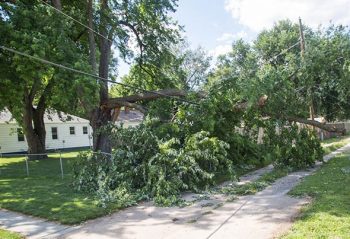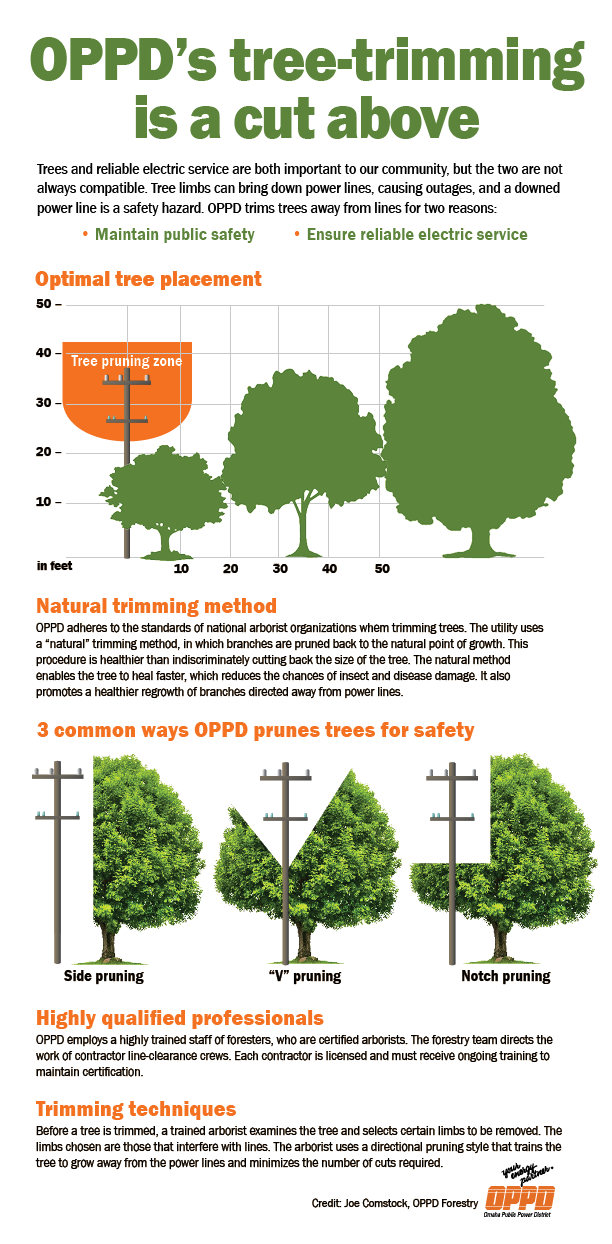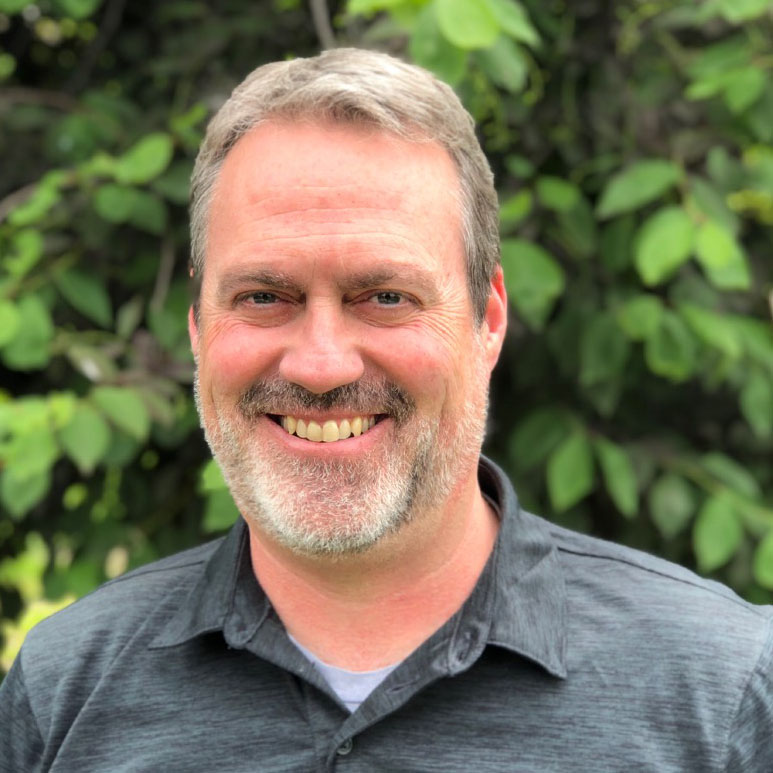Who’s responsible for cleaning up tree debris after storms?

When damaging storms strike, trees and power lines can tangle and cause problems. And those storms can happen during any season in this region.
Early snowstorms that happen when trees still have most of their leaves, for example, or typical July thunderstorms can cause trees to come into contact with power lines, causing outages.
When that happens, OPPD will call in extra tree crews to help clear the lines. The process for tree trimming in storm situations differs from OPPD’s normal tree maintenance practice.
“During storms, the crews’ main job is to clear the lines,” said Mike Norris, utility forester at OPPD. “We are trying to get the power back on to our customers as quickly and as safely as we can.”
OPPD’s tree contractors pick up debris during normal trimming conditions. But during storm events, they will leave debris so they can get to the next customer and free up more lines, Norris said.
Homeowners are responsible for cleaning up that debris. Customers are responsible for trimming trees on their property except near power lines. OPPD is responsible for keeping the distribution and transmission lines cleared from tree interference, Norris said.
Dangerous work
Safety and timely restoration are always the top priorities at OPPD. Storm restoration can be some of the most dangerous work crews face, Norris said.

Downed wires are one of the main hazards during storms. Downed limbs are another potential hazard. Customers should stay away from limbs that are tangled up in lines. Anyone who sees a downed wire should stay at least 30 feet away, assume the wire is live and contact OPPD at 1-800-554-6773.
Broken limbs still hung up in trees are another hazard for tree crews working during outages and customers. They pose a risk to power lines and anyone below the limb, Norris said.
Limbs hanging from lines create tension if restricted or pinned and can be dangerous when that tension is released and can even act like a spring. Limbs that spring free when released can hit a worker, Norris said. OPPD is responsible for freeing those lines and removing the limbs from the wire.
Power lines that are pinned by limbs can also be dangerous. When the limb is removed, the power line can spring back and strike a worker, Norris said.
Tree trimming methods
Crews doing normal tree trimming maintenance work on a whole circuit, block by block. Customers are notified before crews come out. The crews pick up debris when they finish trimming.
OPPD’s guidelines call for directional pruning. Directional pruning is trimming or pruning a tree to encourage it to grow in a different direction. For OPPD, that means away from power lines. OPPD uses two common pruning methods – side pruning and the “V” cut – illustrated in the infographic below. Trees heal faster and are more resistant to disease and insects with these cuts, Norris said.
Omaha’s Henry Doorly Zoo and Aquarium benefit from OPPD’s tree trimmings during normal tree maintenance. Those trimmings become lunch for the zoo’s giraffes and elephants.
During storms, tree-trimming crews make cuts that free up the power lines as quickly and safely as possible. Customers are responsible for clearing the debris that results from that trimming.
Trees are great assets to the community and to property owners, and OPPD works to ensure they thrive, in good weather and bad.


Jason Kuiper joined OPPD as a communications specialist in 2015. He is a former staff writer and reporter at the Omaha World-Herald, where he covered a wide range of topics but spent the majority of his career covering crime. He is a graduate of the University of Nebraska at Omaha and has also appeared in several true crime documentary shows. In his free time he enjoys cooking, spending time with his wife and three children, and reading crime novels.
View all posts by Jason Kuiper >







